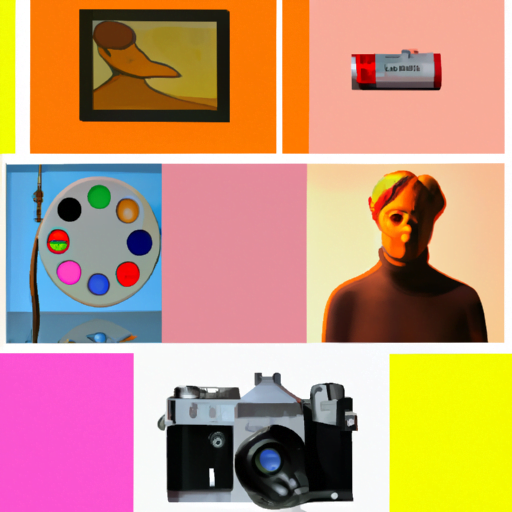-
Table of Contents
- Pop Culture in Design: Referencing Icons and Symbols
- The Power of Pop Culture in Design
- Benefits of Referencing Icons and Symbols
- Successful Implementations of Pop Culture References in Design
- 1. Coca-Cola’s “Share a Coke” Campaign
- 2. Supreme’s Collaboration with Louis Vuitton
- 3. Apple’s “1984” Super Bowl Commercial
- Conclusion
Pop Culture in Design: Referencing Icons and Symbols
Pop culture has a significant influence on various aspects of our lives, including design. From fashion to graphic design, pop culture references are often used to create visually appealing and relatable designs. Icons and symbols from popular culture can evoke nostalgia, create a sense of familiarity, and establish a connection with the audience. In this article, we will explore the role of pop culture in design, the benefits of referencing icons and symbols, and provide examples of successful implementations.
The Power of Pop Culture in Design
Pop culture is a reflection of society’s interests, trends, and values. It encompasses various forms of entertainment, such as movies, music, television shows, and celebrities. Designers often tap into the power of pop culture to create designs that resonate with their target audience. By referencing icons and symbols from popular culture, designers can tap into the emotional connection people have with these elements, making their designs more relatable and engaging.
One of the key advantages of using pop culture references in design is the ability to evoke nostalgia. Nostalgia is a powerful emotion that can transport individuals back to a specific time or place, triggering positive emotions and memories. By incorporating icons and symbols from popular culture that were prevalent during a particular era, designers can tap into the nostalgia of their target audience, creating a sense of familiarity and comfort.
Benefits of Referencing Icons and Symbols
Referencing icons and symbols from pop culture in design offers several benefits:
- Instant Recognition: Popular icons and symbols are instantly recognizable, making them effective in capturing the attention of the audience. When people see a familiar symbol or icon, they are more likely to engage with the design and remember the message it conveys.
- Establishing Connection: Pop culture references can help designers establish a connection with their target audience. By incorporating elements that are relevant and relatable to the audience’s interests, designers can create a sense of belonging and understanding.
- Creating Emotional Appeal: Icons and symbols from pop culture often carry emotional significance. By referencing these elements, designers can tap into the emotions associated with them, creating a deeper emotional connection with the audience.
- Enhancing Brand Identity: Incorporating pop culture references in design can help brands establish a unique identity and differentiate themselves from competitors. By aligning with popular icons and symbols, brands can position themselves as relevant and in touch with the current cultural landscape.
Successful Implementations of Pop Culture References in Design
Several brands and designers have successfully incorporated pop culture references in their designs. Let’s explore some notable examples:
1. Coca-Cola’s “Share a Coke” Campaign
In 2011, Coca-Cola launched its “Share a Coke” campaign, which featured personalized bottles with popular names and phrases. By referencing personal names, Coca-Cola tapped into the individual’s sense of identity and created a personal connection with the audience. The campaign was a huge success, with increased sales and widespread social media engagement.
2. Supreme’s Collaboration with Louis Vuitton
In 2017, streetwear brand Supreme collaborated with luxury fashion brand Louis Vuitton to create a limited-edition collection. The collaboration featured Louis Vuitton’s iconic monogram pattern combined with Supreme’s bold logo. By merging high fashion with streetwear culture, the collaboration generated significant buzz and created a sense of exclusivity among fashion enthusiasts.
3. Apple’s “1984” Super Bowl Commercial
In 1984, Apple aired its iconic “1984” commercial during the Super Bowl. The commercial referenced George Orwell’s novel “1984” and depicted Apple as a revolutionary force breaking free from conformity. By tapping into a well-known literary reference, Apple positioned itself as an innovative and rebellious brand, setting the stage for its future success.
Conclusion
Pop culture references in design can be a powerful tool for capturing attention, establishing connections, and creating emotional appeal. By referencing icons and symbols from popular culture, designers can tap into the nostalgia and familiarity of their target audience, making their designs more relatable and engaging. Successful implementations of pop culture references in design, such as Coca-Cola’s “Share a Coke” campaign, Supreme’s collaboration with Louis Vuitton, and Apple’s “1984” commercial, demonstrate the effectiveness of incorporating popular icons and symbols. As design continues to evolve, pop culture will undoubtedly remain a valuable source of inspiration and influence.
